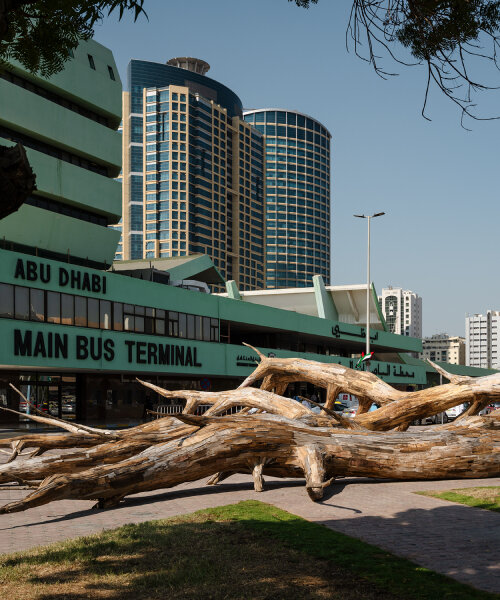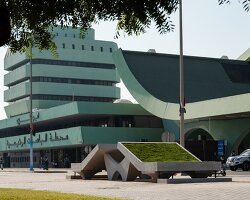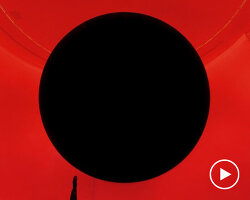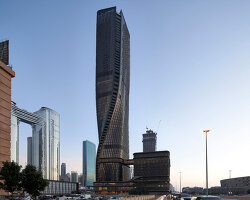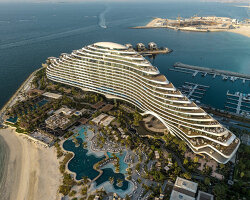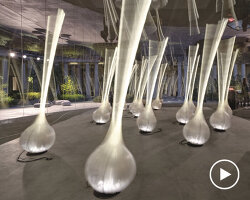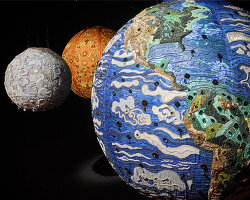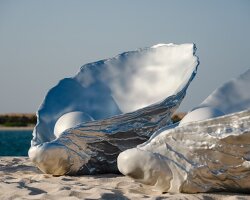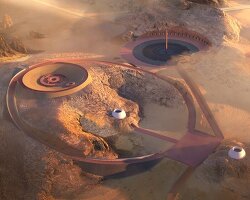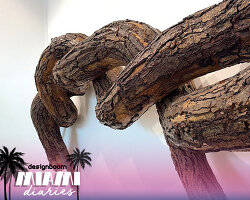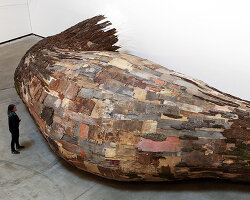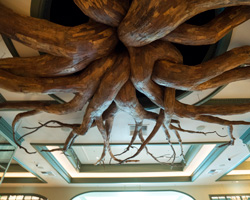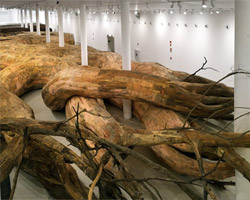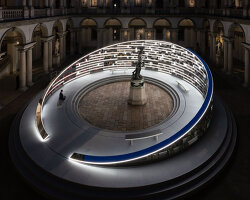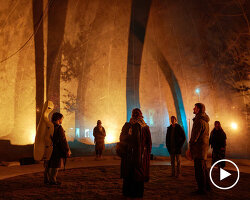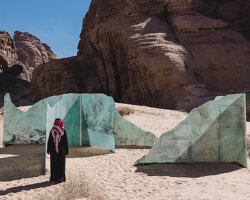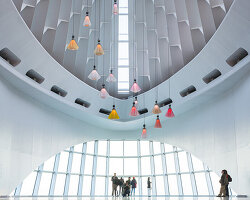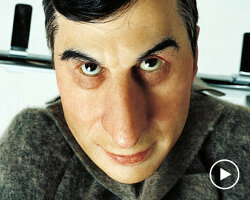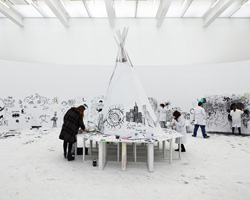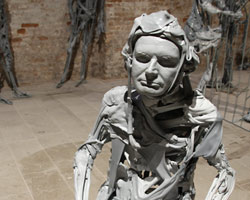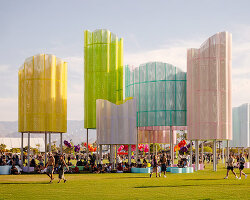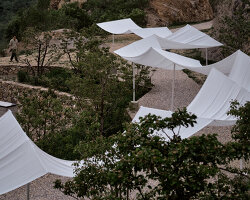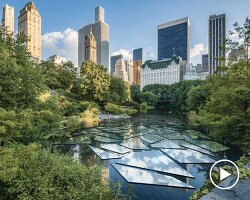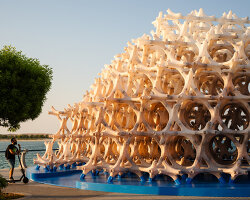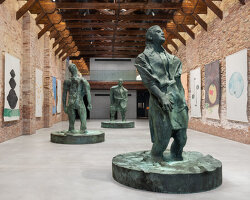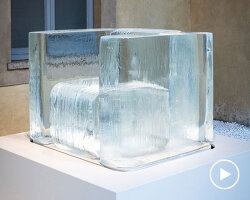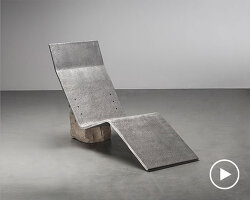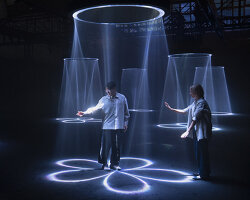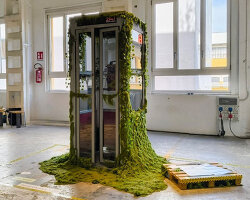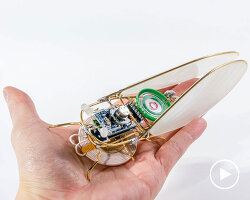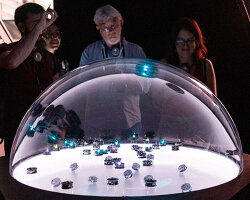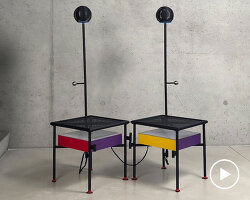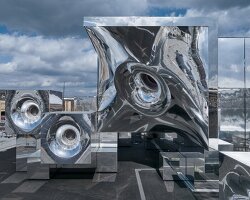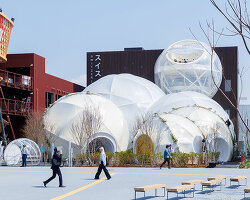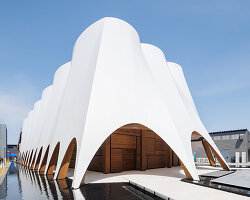inaugural public art abu dhabi biennial activates the city
Speaking to the diverse communities that call Abu Dhabi home, the emirate’s inaugural public art biennial embeds over 50 interventions into the city’s daily rhythms. Over 70 regional and international artists infuse new layers and perspectives across spaces of routine encounters. From the coastline to modernist monuments and UNESCO World Heritage sites, the city is activated by an array of sculpture, sound, and light. For the curators, the core focus is inclusivity; ‘The title, Public Matter, emphasizes that this biennial is for everyone. The idea behind it was to make art accessible without needing to enter museums or pay to access spaces,’ co-curator Carmen Hassan tells designboom during our visit. It is particularly endearing that the program’s reimagining of public spaces extends beyond human interaction to include broader ecosystems. Local cats have made themselves at home within Farah Al Qasimi’s oyster sculptures, ducks wade curiously around Seema Nusrat’s submerged rooftops, and children have turned Pawel Althamer’s cat-shaped tent into a canvas for their imaginations.
The theme is divided into four key factors — environment, community, urbanity, and indigeneity — inviting conversations around ideas of global significance while also responding to their specific contexts. Wael Al Awar’s Barzakh pavilion repurposes marine waste to envision sustainable construction practices, while Henrique Oliveira’s Desnatureza 7 lays a large, contorted tree at the doorstep of the bus terminal. Such works examine how these thematic conditions shape public spaces as sites of interaction, activism, and renewal. The Public Art Abu Dhabi Biennial runs until April 30th, 2025.

Where Lies My Carpet Is Thy Home by Christopher Joshua Benton | all images by Lance Gerber
urging daily encounters and new perceptions with public art
The biennial’s eight thematic routes lined with artworks wind through Abu Dhabi and Al Ain to create spontaneous interactions while urging residents to uncover new perspectives of their city. ‘We wanted people living here to encounter art in their everyday lives — whether they’re driving to work, walking around, or passing by,’ shares Carmen Hassan. The curator also elaborates that the works arose organically from a series of site visits during which artists explored the city to identify spaces and themes that resonated with their practices. ‘We shared Abu Dhabi’s story and asked them to respond to its context,’ Hassan continues. This engagement with the UAE’s history and its evolution then naturally allowed artists to draw on the environment’s cultural, ecological, and architectural narratives.
Along the Corniche, Farah Al Qasimi’s Homesickness transforms the shoreline into a site of memory and longing. A cluster of large oysters emit a soothing soundscape — a reimagined version of a traditional chant sung by the wives of pearl divers. The sculpture pays homage to the intimate relationship between the women and the sea, capturing their songs of yearning. Positioned by the water, the installation reflects the ocean’s cultural and economic significance in cultures of the Gulf, resonating with both personal and collective histories.
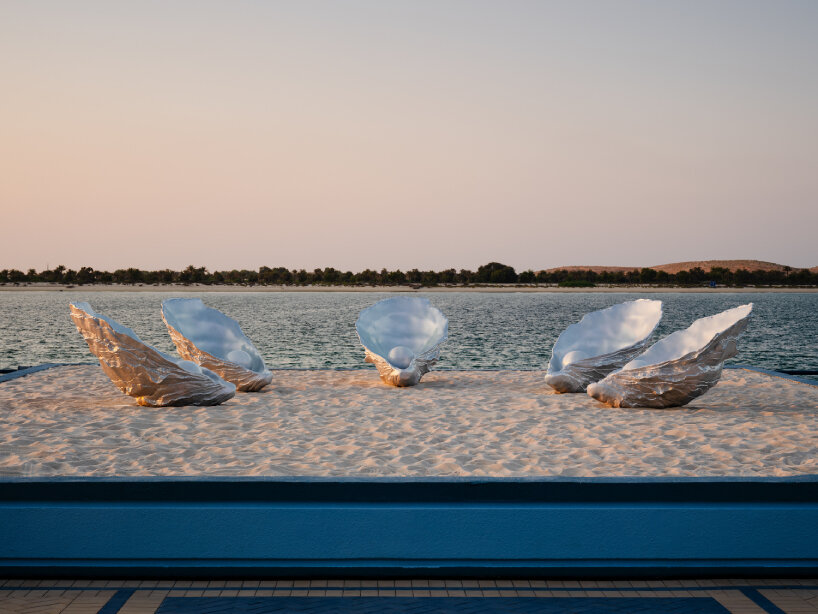
Homesickness by Farah Al Qasimi
wael al awar and seema nusrat address ecological concerns
Also drawing inspiration from the sea and local traditions is Wael Al Awar’s domed Barzakh pavilion, composed of 100 modular pieces made from recycled plastic, palm fibers, and brine. The architect reimagines these materials, which are often dismissed as waste, as sustainable building resources, advocating for local solutions to global ecological crises. Palm fibers and crystallized salt strengthen the structure, while sensory elements at the top react to the wind, casting shifting light patterns that evoke the relationship between land and sea.
Likewise addressing pressing ecological concerns, Seema Nusrat’s Floating Fragments reflects upon climate change and urbanization. Installed in a pond across the Corniche, the work depicts a house submerged by an imagined flood, with only its terracotta roof visible above the waterline. This detail nods to the shingling commonly seen across the UAE, connecting the artwork to local heritage while confronting the fragility of cultural preservation in the face of environmental disasters.
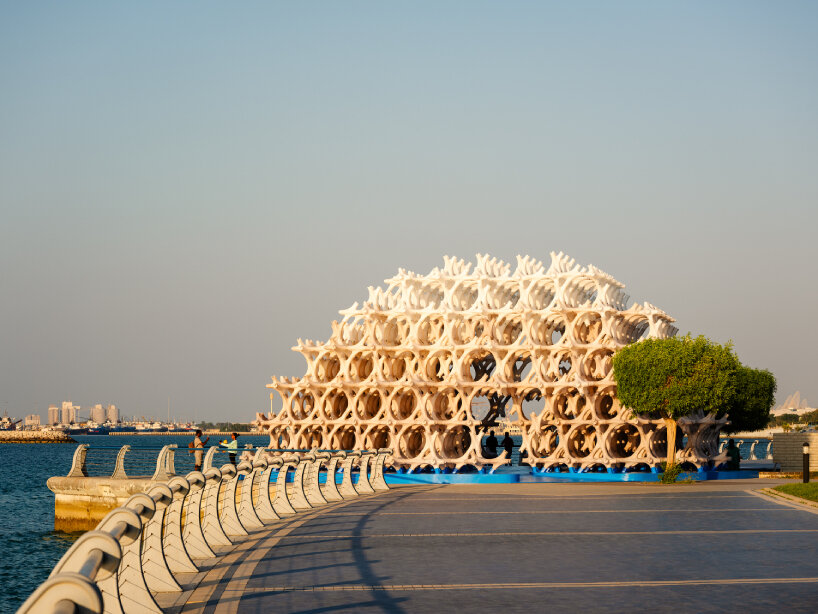
Barzakh by Wael Al Awar
sammy baloji examines resources and scarcity
Adopting a more political approach towards nature, indigeneity, and resources, Sammy Baloji’s The Other Shore draws a powerful connection between the Gulf’s economic history and the resource extraction that has shaped the Democratic Republic of Congo. Copper wire has been contorted into the silhouette of a Pajero, inspired by the miniature cars crafted by Congolese children — echoing both ingenuity and scarcity in a resource-depleted landscape. With imported plants from the Congo, the artist creates a terrarium-like ecosystem. Beneath, a water tank sustains its life cycle, critiquing how resources like water and oil serve as lifeblood for some regions while others bear the burden of extraction.
In contrast, Rawdha Al Ketbi’s Al Gaidh in Al Ain reimagines the relationship between nature and human-made structures. Where Baloji highlights nature encroached upon by industry, Al Ketbi explores growth, renewal, and decay through a merging of the three. Her installation features ladders intertwining with palm trees, symbolizing the life-giving water that sustains the nakheel and, by extension, the ancestral traditions rooted in the oasis.
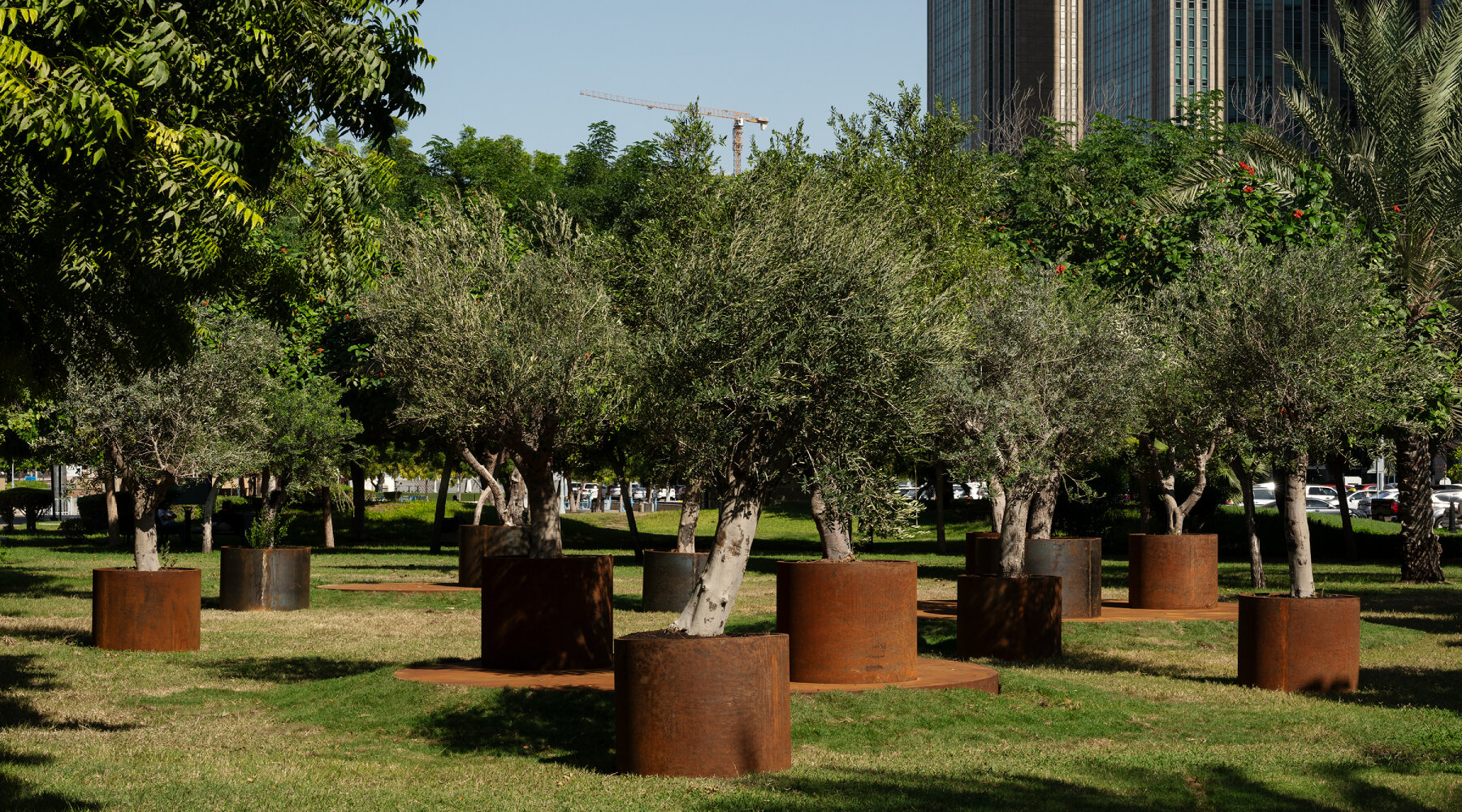
Among Trees by Khalil Rabah
Lawrence Abu Hamdan reimagines ancestral traditions
The theme of heritage and traditions carries an inherent duality: it grounds communities in their shared past while offering a framework for reimagining future practices. Lawrence Abu Hamdan’s The Conversation (Flows) draws from the intimate, historical relationship between sound and private spaces, reinterpreting the sonic intimacy of fountains in old Damascene courtyards, where flowing water masked private conversations. The Jordanian artist presents 15 kinetic, sonic sculptures that move with the water, creating an ever-shifting percussive soundscape amid urban life.
Similarly exploring the cyclical connections between cultural narratives and the environment, Khalil Rabah’s Among Trees presents a cluster of 15 mature olive trees in rusted metal containers. Some trees stand still, while others rotate in unpredictable patterns, mimicking the rhythms of Sufi rituals and transforming a public park into a meditative space. This dance blurs the lines between the rooted and the displaced, as the Palestinian artist reflects on the nature of belonging and movement.
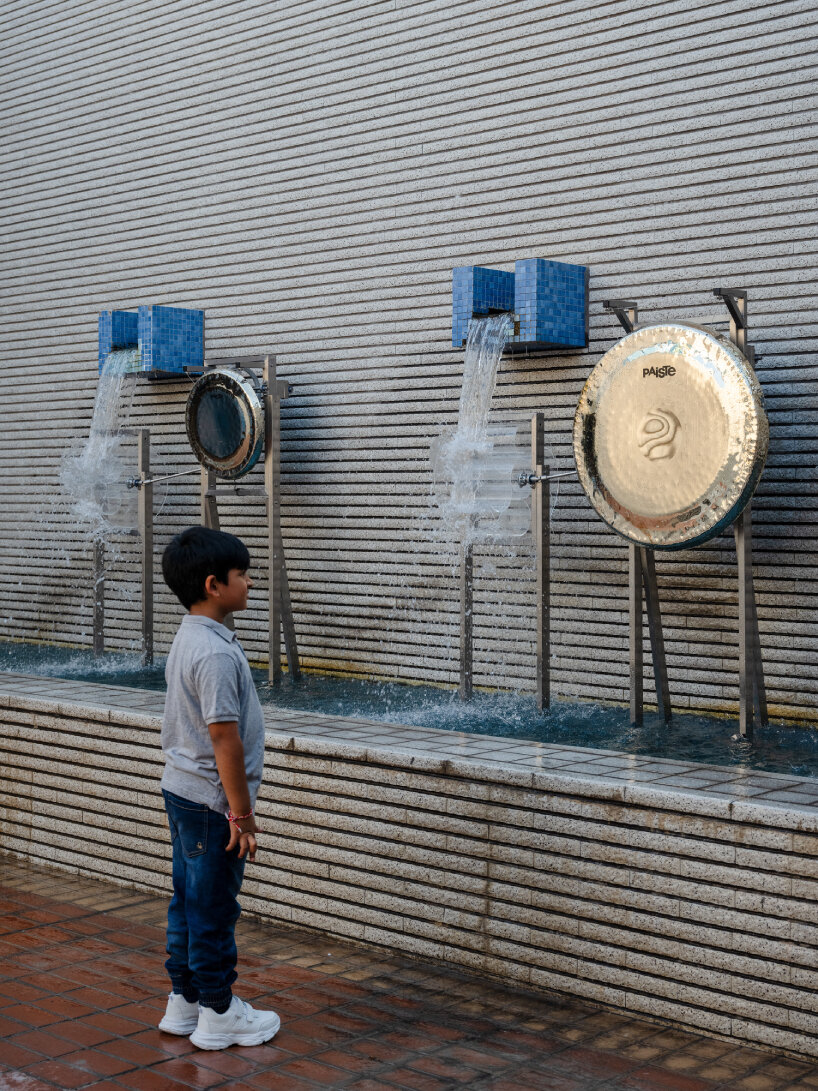
Wsh Wsh by Lawrence Abu Hamdan
new meeting points converge abu dhabi’s diverse communities
The concept of engaging communities through shared spaces and storytelling takes on diverse forms at the biennial, reflecting how cultural imaginaries shape public interaction. Load Na Dito, a Manila-based curatorial duo, transforms a rundown bakery into In Search of a Monument, a participatory installation inspired by the ubiquitous yet vibrant storefronts of downtown Abu Dhabi. Visitors gather around a circle of cushions, engaging in a gamified conversation that encourages exchange through random word prompts while molding colorful playdough. These creations are displayed on the shelves as tangible souvenirs of shared experiences, and symbolic artifacts of memory.
Christopher Joshua Benton’s Where Lies My Carpet Is Thy Home similarly turns Abu Dhabi’s Carpet Souq into a meeting point embedded with collective memory. Commemorating the stories of migrant merchants from Afghanistan, Pakistan, and India, Benton weaves a sprawling lawn-sized carpet that merges the Afghan war carpet aesthetic with 8-bit pixel imagery. Visitors are invited to walk over the artwork, linger, and converse. Pawel Althamer’s Tentarium too encourages public participation with an animal-inspired twist. Situated in Lake Park, the cat-shaped tent pays homage to the city’s free-roaming felines, welcoming visitors — particularly children — to paint and draw on its interior. The exterior meanwhile pays homage to the Emirati Sadu weaving tradition.
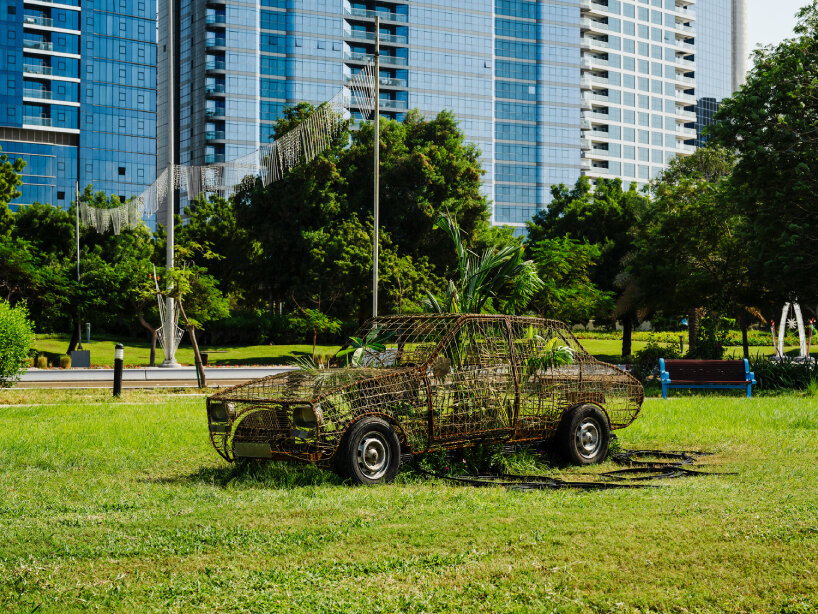
Kombwelo 504 by Sammy Baloji
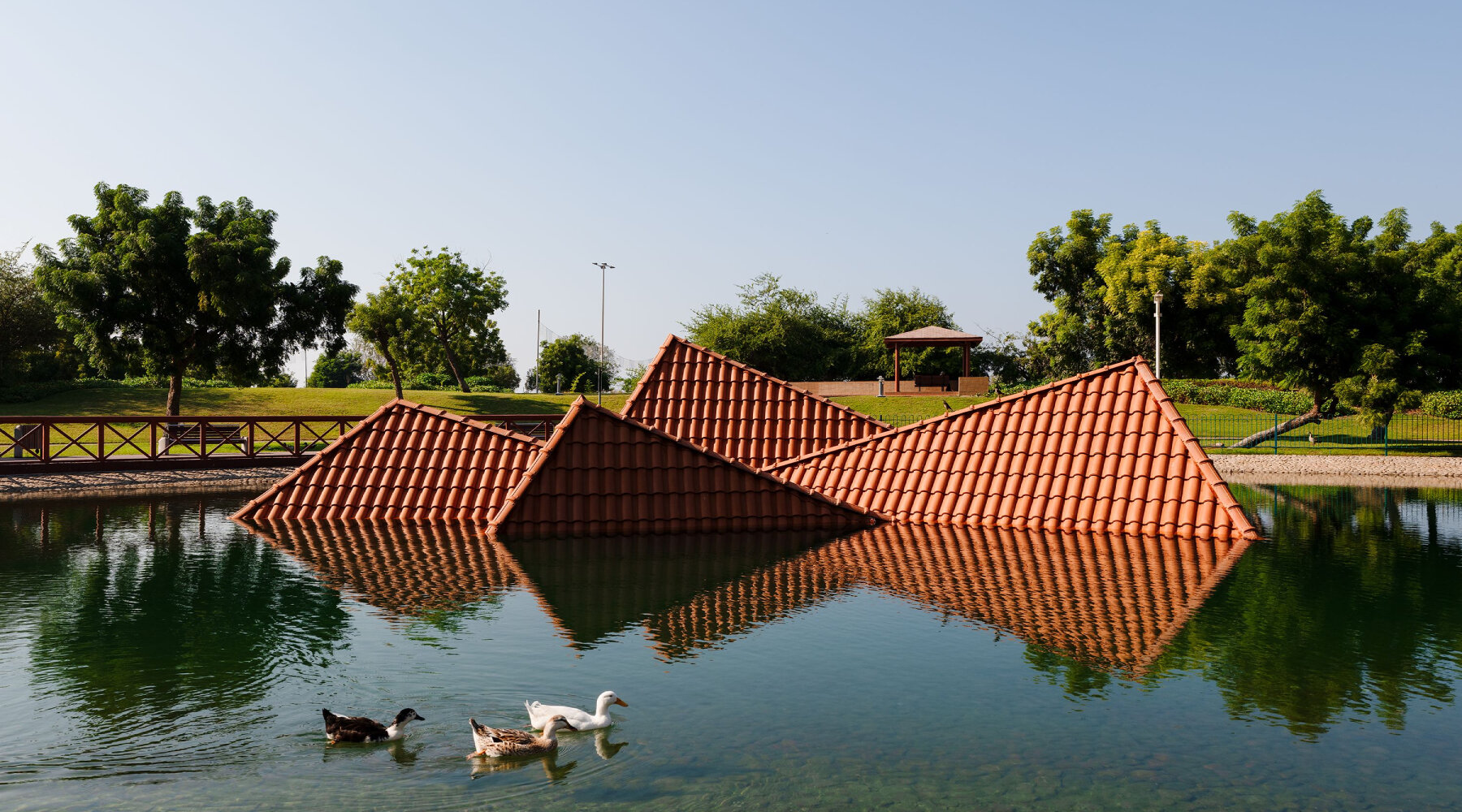
Floating Fragments by Seema Nusrat
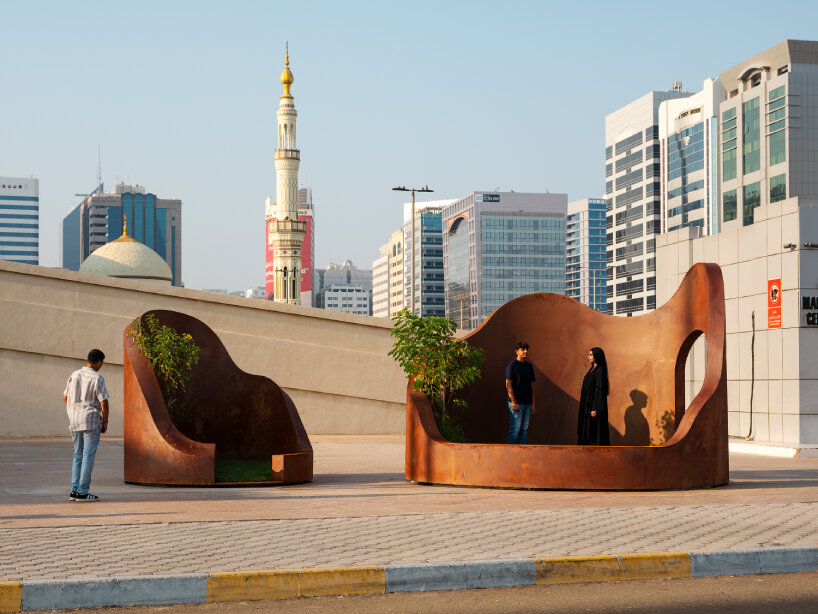
My Courtyard by Azza Al Qubaisi
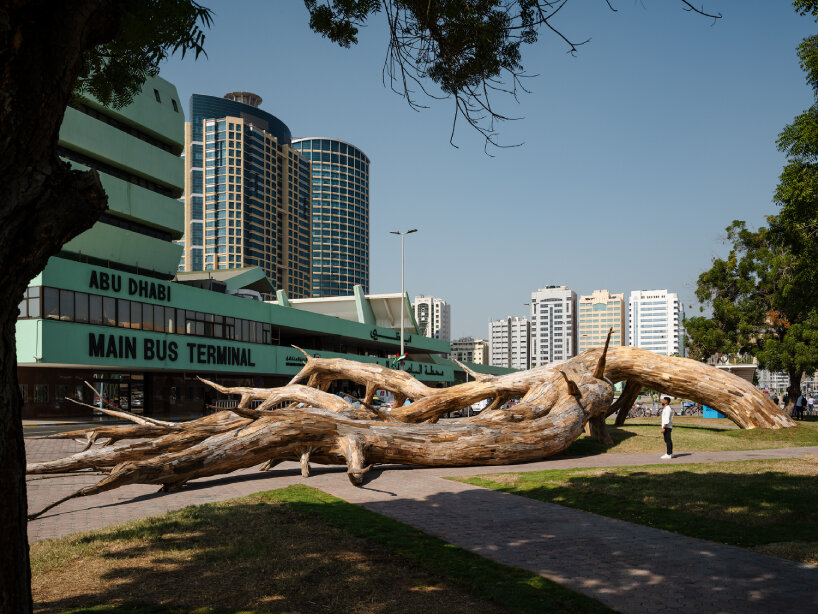
Desnatureza 7 by Henrique Oliveira
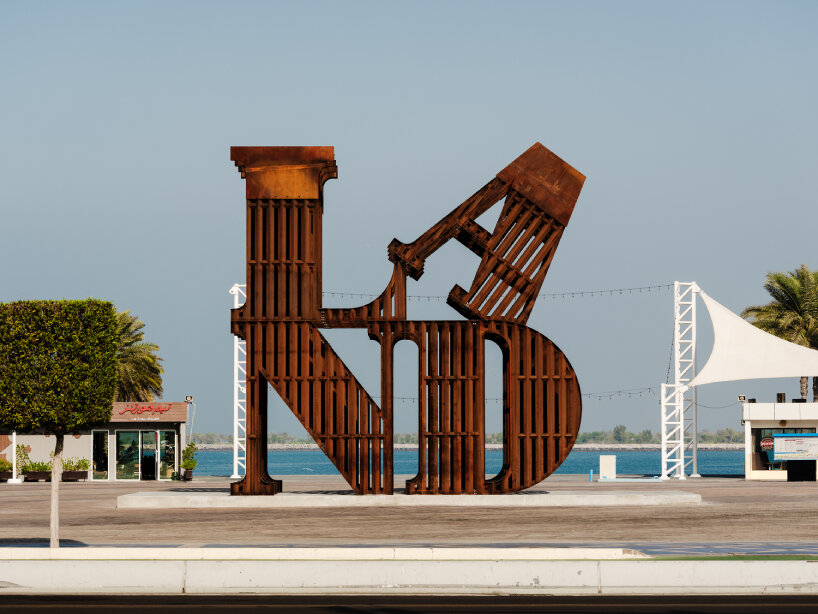
In every language there is Land _ En cada lengua hay una Tierra by Nicholas Galanin
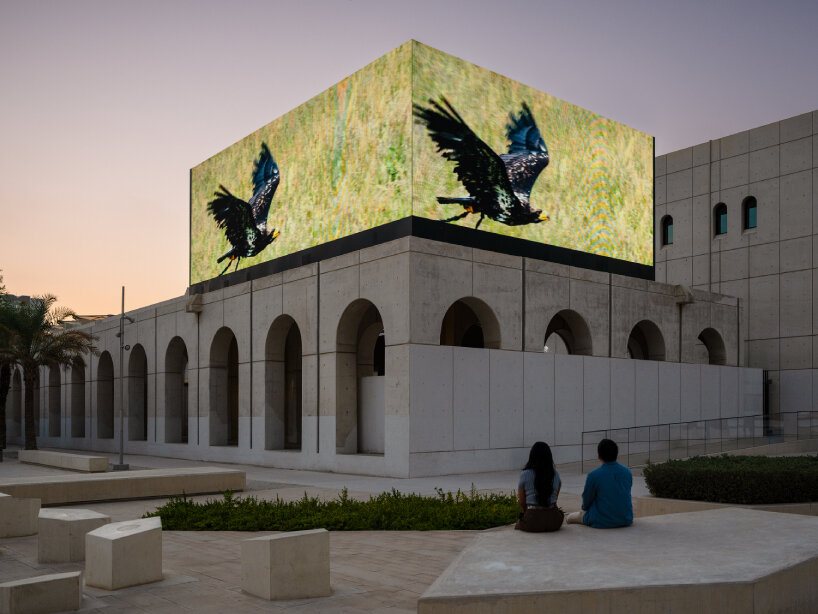
Aquila non capit muscas by Mircea Cantor
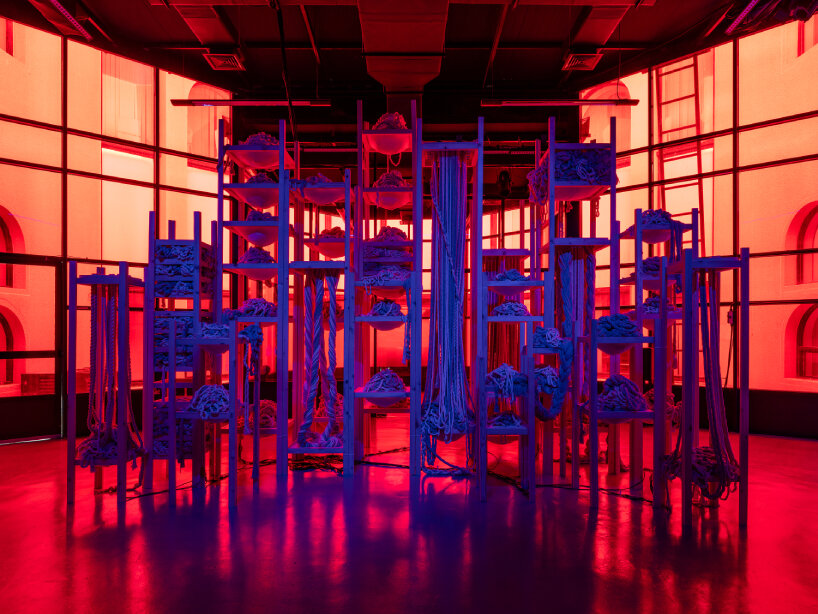
D-constructing Collective Exhaustion by Afra Al Dhaheri
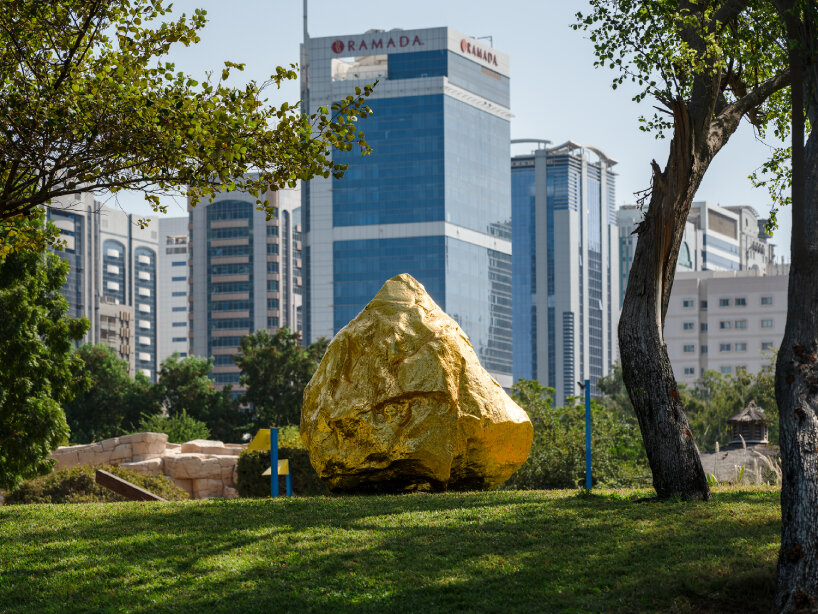
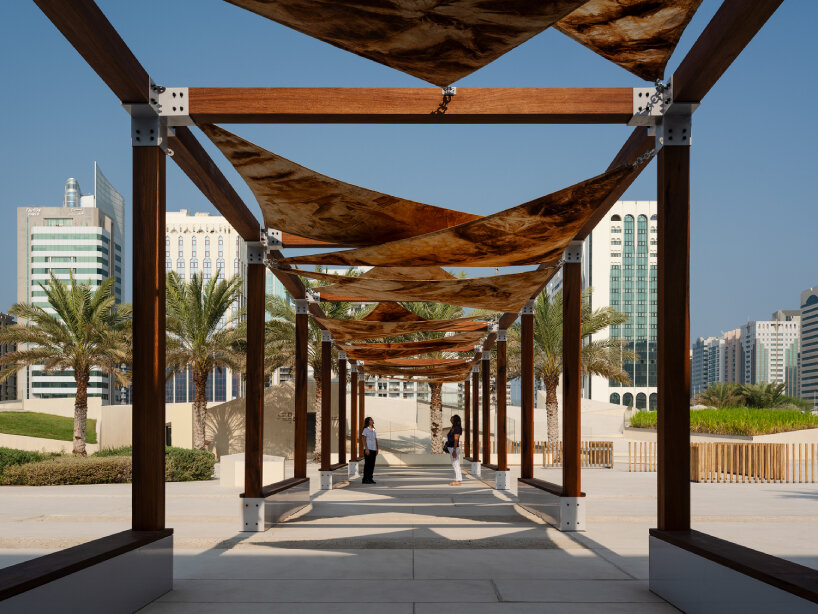
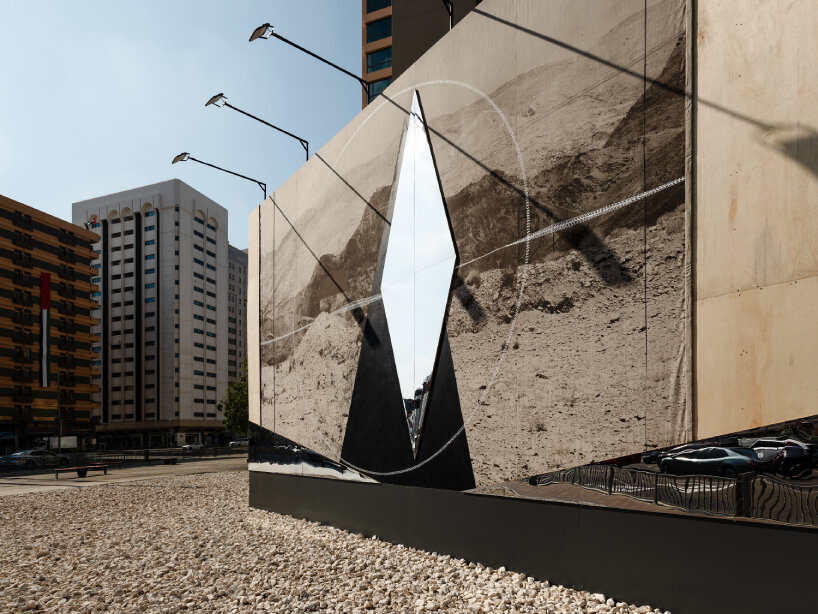
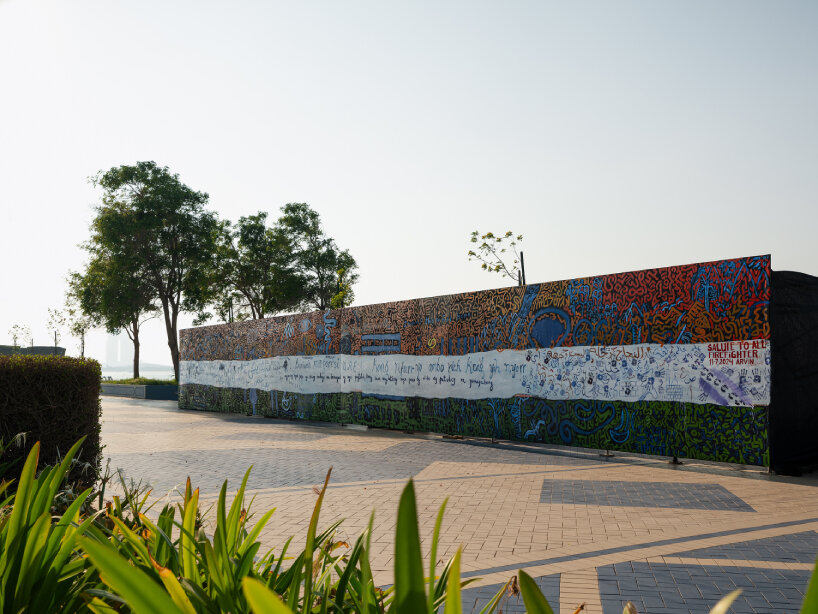
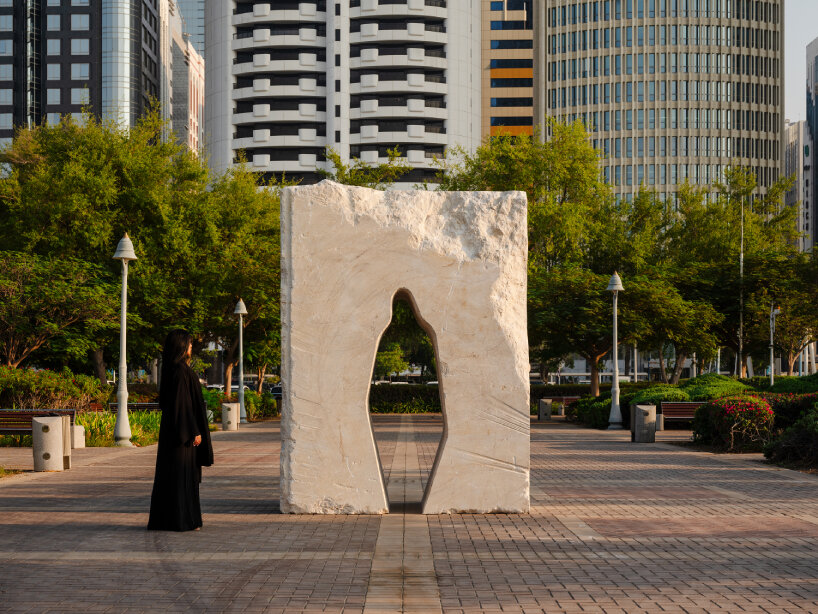
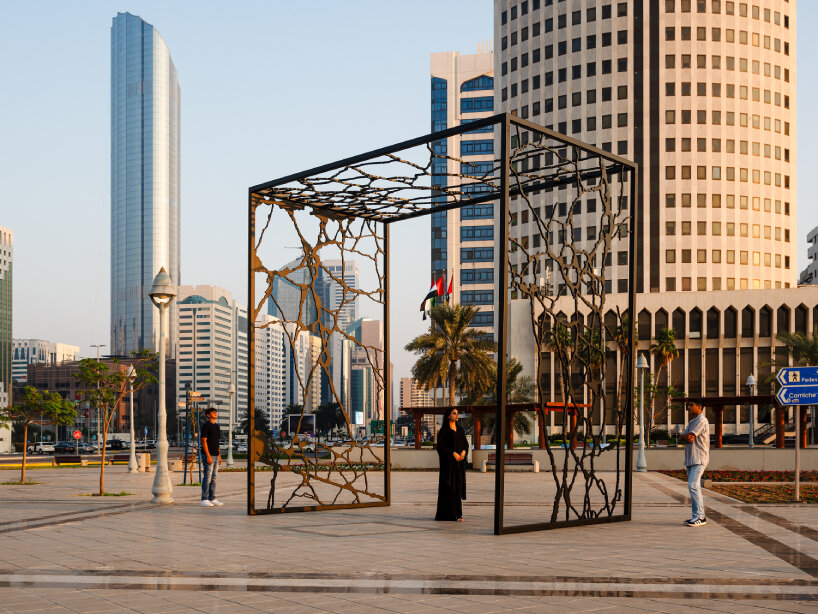
project info:
event: Public Art Abu Dhabi Biennial | @publicartabudhabi
location: Abu Dhabi, UAE
dates: 15th November, 2024 — 30th April, 2025
